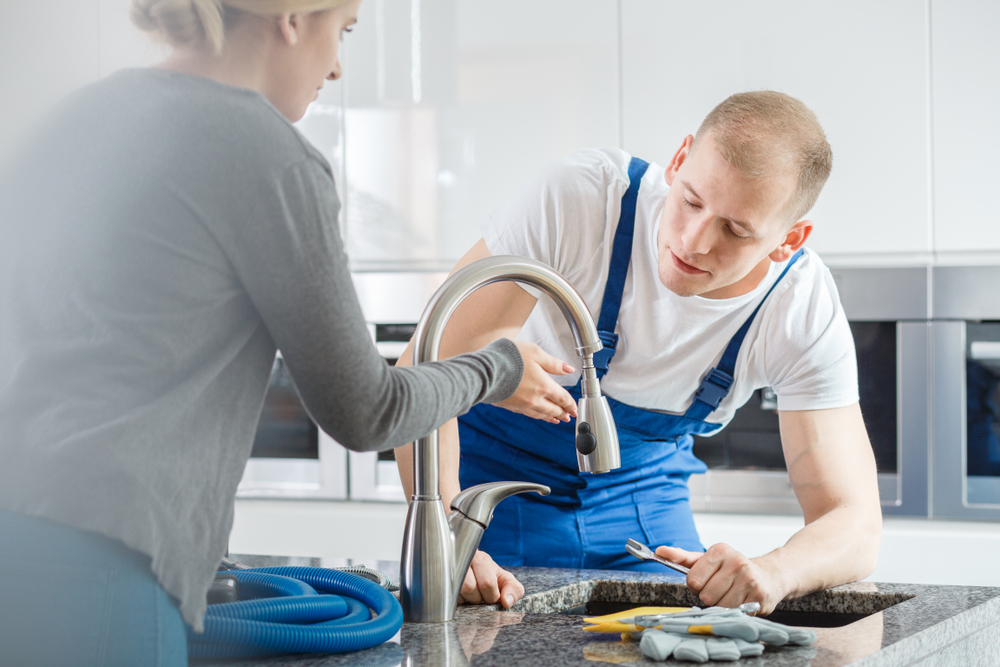HOW TO: Upgrade Your Kitchen or Bathroom Faucet
By Marcie Lowery
August 1, 2025 at 12:38 PM CDT
Giving your Kitchen or Bath a revamp can be as simple as replacing the hardware. With just a few tools and some patience, enhance your space's functionality and appearance. Read on to transform your sink hassle-free!

Replacing a kitchen or bathroom faucet is a common DIY project that can enhance the functionality and appearance of your space. Whether you’re a seasoned DIYer or a beginner, this weekend project is manageable with a few tools and some patience. Follow these step-by-step instructions to install a faucet effortlessly, and don't forget, for any real estate needs, you can reach out to me for expert guidance.
Tools and Materials Needed:
- New faucet
- Adjustable wrench
- Plumber’s tape
- Basin wrench
- Bucket or towels
- Silicone caulk (if needed)
Step-by-Step Installation:
Step 1: Turn Off Water Supply
Start by turning off the water supply valves under the sink. These are usually located just behind the pipes. If you don’t have separate valves, you may need to turn off the home's main water supply. Open the faucet to let any remaining water in the pipes drain out.
Step 2: Disconnect Water Lines
With the bucket or towels in place to catch any residual water, unscrew the water line connections using an adjustable wrench. Carefully remove the old faucet by loosening the nuts that hold it in place, often found beneath the sink. A basin wrench may be helpful for tight spaces.
Step 3: Prepare the Surface
Once the old faucet is removed, clean the sink’s surface area. Remove any old caulk or plumber’s putty to ensure a smooth surface for the new faucet. This will also help prevent leaks.
Step 4: Install the New Faucet
Follow the manufacturer’s instructions to install the new faucet. Insert the faucet through the pre-drilled holes in the sink and secure it with the provided nuts. Make sure it’s tightly fastened.
Step 5: Connect Water Supply Lines
Wrap plumber’s tape around the threads of the faucet connections to ensure a tight seal. Connect the water supply lines to the faucet and tighten them with an adjustable wrench, but be careful not to over-tighten.
Step 6: Test the Faucet
Turn the water supply back on and slowly open the faucet. Check for leaks around the connections and ensure that the hot and cold water are flowing appropriately. If any leaks occur, tighten the connections as needed.
And there you have it! Your new kitchen or bathroom faucet is installed, adding both functionality and style to your space. This simple update can make a significant difference, especially if you are considering selling your home. Upgrades like these can help increase appeal to potential buyers.
If you have questions about home improvement projects, or if you're thinking about buying or selling property, don't hesitate to contact your local real estate expert at Realty Texas. We're here to assist you with all your real estate needs, ensuring your journey is successful and satisfying.
Contact Information:
Marcie Lowery, REALTOR®
Cell: (512) 629-0899 or 903-626.0060
Email: marcie-lowery@realtytexas.com
Visit my website: marcie-lowery.realtytexas.com
Disclaimer: This blog is intended for informational purposes only. Please exercise caution and take appropriate safety measures when performing any DIY projects. For professional advice and installations, seek the services of a qualified plumber. Realty Texas and Marcie Lowery are not liable for any damages or injuries resulting from attempts to perform tasks based on this guide.

Comment